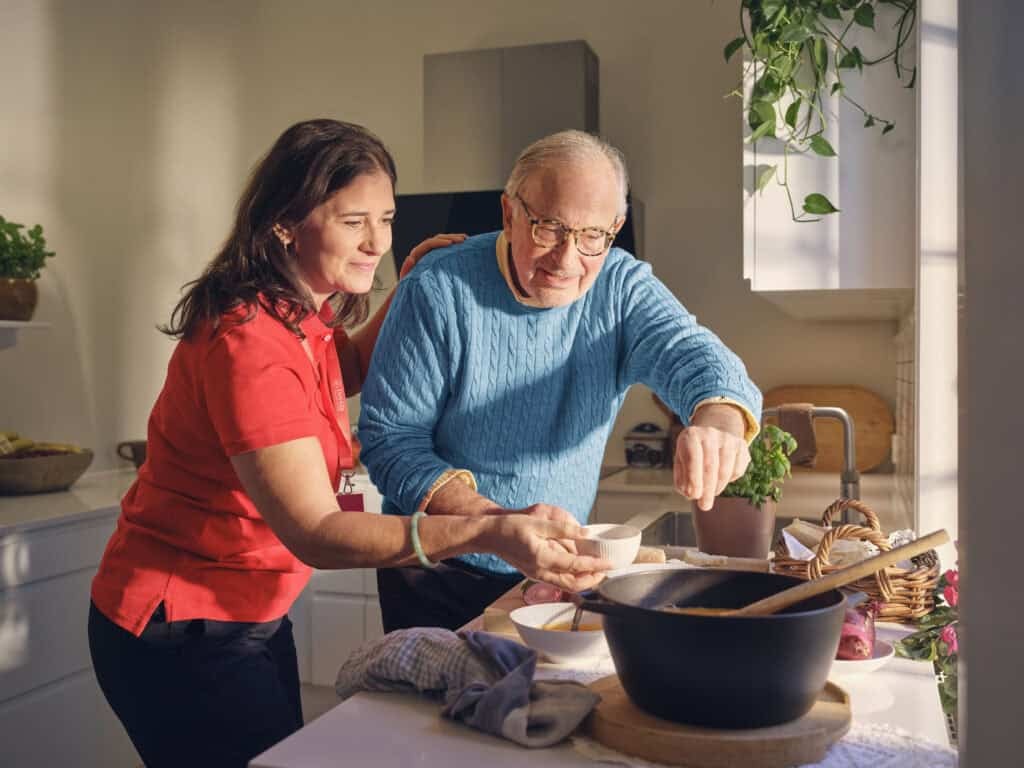Blog
20 October 2025
End-of-Life care is finally on the agenda, but the path ahead isn’t straightforward
In this post, Dovida staff member Karen Conte, a Palliative Care Nurse Practitioner with more than 30 years experience, reflects on the growing focus on end-of-life care in Australia — and the complex challenges ahead in delivering truly person-centred, compassionate support.
While we are definitely on the right track, I do have serious concerns about a few potential roadblocks along the way to ensuring Australians can draw upon the Federal Government’s soon-to-be-released funding for in-home end-of-life care.
As we near the long-awaited release of the new ‘End-of-Life Pathway’ funding as part of the Support at Home Program launch on November 1, I think we must address every potential barrier that might emerge for Australians who wish to die at home.
Given our ageing population, any decision that introduces the concept of end-of-life care into the national discourse should be welcomed. But having worked in palliative care for more than three decades, I foresee some challenges in delivering the new pathway.
One of my biggest concerns is that Support at Home participants will only receive the new EOL funding instead of their current package – rather than in addition to it.
What that means, from a funding perspective, is the new pathway is unlikely to make much material difference to those already receiving the highest classification of home-care support.
And there’s another problem.
The new EOL pathway delivers up to 12 weeks of funding, with the ability to extend for an additional four weeks, to older Australians given three months or less to live, regardless of whether they are an existing program participant or not.
While I welcome the ability to access up to $25,000 per individual for a range of home care services such as nursing, personal care and domestic help, I have some concerns around the stipulated timeline.
What happens, for example, when a participant outlives their prognosis? It’s something I often see in my role with home care provider Dovida.
Participants who are still alive and haven’t used all their funding can extend for an additional four weeks – but after that, they revert to their original classification level.
Meanwhile, EOL funding cannot be applied for again, even though illness trajectories are often unpredictable, particularly in frail and older people with multiple co-morbidities.
All of which leaves older Australians who need access to additional in-home care services at risk of missing out on vital support during the final stages of their lives.
What I would prefer to see is the funding made available in addition to the participants’ current classification funding – not instead of – because that would have made a real difference in keeping older Australians at home and out of hospital beds.
In other words, funding should be provided on an assessed-needs basis, rather than a difficult-to-predict prognosis.
My other concern is that funding relies on participants getting a sign-off from a medical practitioner or nurse practitioner to say they only have three months to live.
That is an incredibly difficult prediction for a palliative care professional to make, let alone a general practitioner who sees, on average, between one to three palliative care patients per year.
Not many organisations will have a nurse practitioner on staff to assess participants and apply for the EOL funding. It’s also rare for GPs to do home visits, as they are already time-poor and not adequately remunerated to undertake them.
Although the ‘End-of-Life Pathway’ is well-intentioned, it still relies on accessing the right practitioners to complete the forms.
There are also questions around how long it will take for My Aged Care to make fast-tracked assessments, along with challenges around the level of support participants receive should the funds run out.
I would urge any home-care providers offering end-of-life support under the pathway to collect data over the next 12 months to help determine whether the changes have been effective.
I remain cautiously optimistic that these reforms are still a positive step for older Australians. There are opportunities to explore nurse practitioner models of care, allowing timely assessments and EOL pathway applications, along with improved symptom and medication management.
However, implementing a new pathway will not be easy – especially for practitioners with limited awareness of the changes. Success will depend on how well those practitioners are supported to understand and apply the pathway.
We know the statistics are stark: while 70 per cent of Australians wish to die at home, currently only 14 per cent do so.
Nevertheless, I’m hopeful that with careful implementation and ongoing refinement based on real-world data, we can begin to close the gap between what Australians want and what they can actually access.
